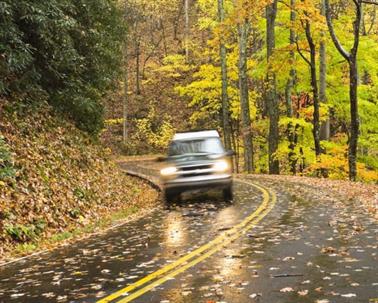Fall and winter in New England bring some of the worst driving hazards of the year. And the risks increase with inexperienced, reckless or distracted drivers. Unfortunately, hundreds of people are injured and several are killed each year in fall and winter driving accidents that involve cars, trucks, and pedestrians.
Some hazards that contribute to vehicle accidents during the fall and winter months are below, with ways to stay safe and keep others safe, too.
Students and Back to School
Watch for:
- Children at bus stops, on sidewalks, and in crosswalks, walking or on bikes
- Kids entering and exiting buses
- Adults dropping off students
- Students converging within school areas
- Stopped school buses
Back to School Driving Tips:
- Pay attention to speed limit signs in school zones and slow down to 15 miles per hour or less before, during, and
after school. - Remember that you must stop for the flashing red lights of a school bus, in front or behind.
- Come to a complete stop. Research shows that more than one-third of drivers roll through stop signs in school
zones or in neighborhoods. Children can cross the road unexpectedly or emerge suddenly between parked cars. - Allow at least three feet of passing distance between your vehicle and students on bikes.
Car Accident Hazard: Fog
Many accidents and fatalities occur because of poor visibility. A Dense Fog Advisory alert means that fog has reduced visibility to 1/4 mile or less. Fog can become thicker without warning and without being noticed until it is too late to react.
Fog Driving Tips:
- Roll a window down to help clear the front windscreen. Turn on the heat and let the engine warm up before you
turn on the defrosters and blowers to prevent moisture from collecting on the glass inside. Use your air
conditioner to reduce humidity. - Slow down or stop; don’t drive faster than you can see. Increase your following distance to ensure enough
reaction time for stopping. Use windshield wipers and a defroster to maximize visibility. Signal early, and don’t
slam on your brakes. If you can’t see, pull over, preferably at a rest area or at a truck stop, and turn on your
hazard flashers immediately. - Turn on low beam headlights and if your vehicle has them, fog lights – no high beams. If possible, drive without
any other vehicles around you. Use the right edge of the road or roadside reflectors as a guide. Listen for traffic
you can’t see. Don’t change lanes or pass other vehicles unless absolutely necessary.
Car Accident Hazard: Ice, Snow, and Frost
The driving risks in Maine increase substantially during the winter due to snowy and icy roadways, black ice, sudden wind gusts, and icy debris flying from the roofs of other vehicles. From the first snowfall through the entire winter season, it’s especially important to drive safely.
Ice, Snow, and Frost Driving Tips:
- Be aware of black ice. This shiny, transparent ice develops when rain, fog, or mist along the roadway is near
the freezing point (32° Fahrenheit), and is one of the most dangerous road conditions. It’s likely to form first
under bridges and overpasses, in shady spots, and at intersections. - Drive slowly. Accelerating, stopping, and turning take longer on snow-covered and frosty roads. Apply the gas
slowly to regain traction and avoid skids. If you find yourself in a skid, steer in the same direction that the rear
is sliding toward. Don’t brake. To slow down and regain traction, simply take your foot off of the gas to match your
speed of travel with the speed of your tires. - Use four-wheel drive when you need more traction, but keep in mind that it doesn’t help you stop sooner or
maintain control better once you lose traction. - Turn off cruise control and don’t use it or overdrive on any slippery surfaces such as snow, ice, and water.
- Know how to use your brakes. Whether you have antilock brakes or not, the best way to stop is threshold braking.
Keep the heel of your foot on the floor and use the ball of your foot to apply firm, steady pressure on the brake
pedal. - Don’t tailgate or pass unless absolutely necessary and safe to do so. If you must pass, beware of the snow clouds
that plows, tractor trailers, and other large vehicles create. - Stay home. Even if you can drive well in the snow, not everyone else can.
Keep these driving tips in mind to stay alert and drive cautiously during the fall and winter months to reduce potential vehicle accidents, and protect yourself, your family, and other drivers.​
Sources
American Automobile Association.“Winter Driving Tips.”Accessed 13 Sept. 2017.
American Automobile Association.“How to Go on Ice and Snow.”Accessed 13 September 2017.
American Automobile Association. “School’s Open – Drive Carefully.”Accessed 13 Sept. 2017.
Maine Department of Transportation. “Winter Driving Information.” Accessed 13 Sept. 2017.
